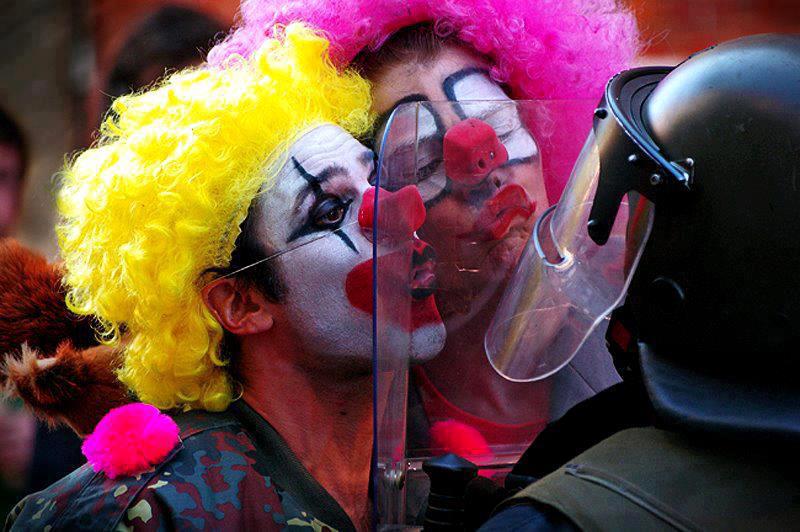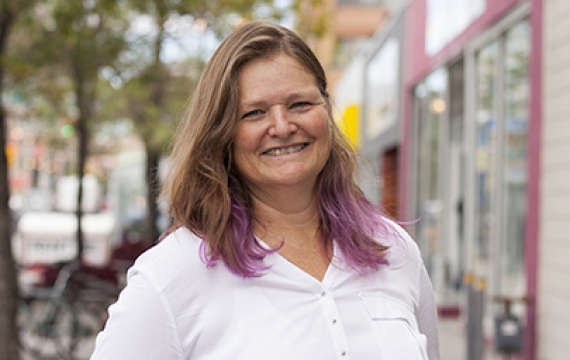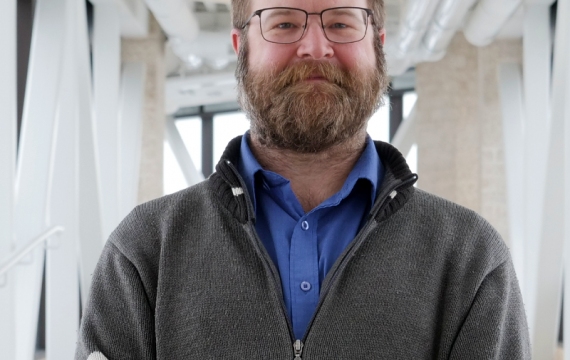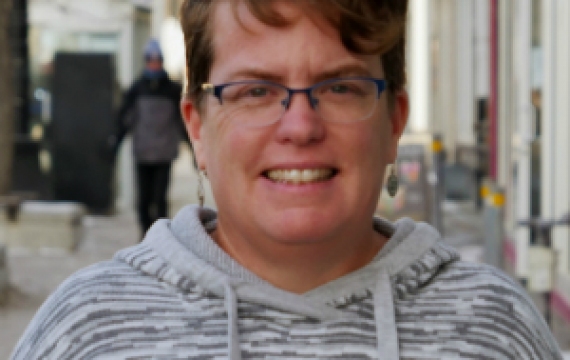
Clowning: speaking truth to power

Karen Ridd
Thirty years ago, I “fell into” clowning. I realize that’s an unusual thing to say, and you might wonder how one accidentally becomes a clown (it’s a long story, trust me). I went on to a short career in clowning, founding the first therapeutic clowning programme in the world, at the Winnipeg Children’s Hospital in 1986 (and a second one in Toronto a few years later).
What most people know about clowns is that they dress up and are supposed to be funny (except, of course, the odd contemporary internet killer clown hoax).
What most people don’t know is that clowns have long held a place in human society as order-breakers and healers. Think of the medieval court jester: tasked with amusing the king and using the healing power of laughter, the fool could also speak truth to the king. Indigenous West Coast Salish clowns use humour to shine light on injustices in society.
The clown is an order-breaker whose job is to turn the tables on power and to bring about justice. Clowning certainly broke the “order” of my life. I was on track to becoming a professor when my life was disrupted by becoming a clown. If I’d become a professor then, I’d have used a lecture-style teaching format, despite the fact that lecturing is not actually the best learning or teaching style for me (there are, of course, some people for whom it is the best learning style). I thought that was the “right” way to do it.
My first teaching experiences, however, were clowning workshops. You simply can’t teach clowning by lecturing; it has to be done experientially. As I became a more experienced teacher, I also grew committed to a pedagogical approach that was experiential, participatory, and sought to change power dynamics. In other words, I was not only teaching clowning, but also letting the material infuse the pedagogy that I was using.
Ironically, I have returned to my earlier path of teaching at a university. I’m hugely grateful for my job; I’m surrounded by great colleagues, inspirational students, and important material. I continue to use a participatory approach, and I have repeatedly felt supported by CMU for using these “alternative” pedagogies in my work at MSC. At the heart of my teaching, as it was at the heart of my clowning, my hope is to empower students to make choices about, and take agency, over their own lives.
MSC faculty teach and to do research—but are also active in our communities. We are expected, nay required, to work for social justice. An issue that is currently calling my “clown self” into action is the recent election in the US which has turned things upside-down. The rhetoric of hatred appalls me. What we need, (and what I hope to help my students encounter) is a clown spirit that is willing to shine light on a dystopian, authoritarian order if it manifests in the US (and to keep working for justice issues in Canada). As US civil rights activist Bayard Rustin says, we need to call out “truth to power.” In this time of escalating uncertainty, we need the clown spirit to find hope, to shift the tables on power, and to continue to empower marginalized people who now encounter more aggressive forms of oppression.
Clowns operate in their own world, and it is the collision of that world with reality which we find funny: 15 clowns get out of a car made for four people or a clown has an invisible dog on a leash or a nose that squeaks. Now, more than ever, we need the clown spirit to hold tenaciously onto a vision of a different world, one of justice, equity, peace; God’s “kin-dom,” if you will.
Clowns assume that all of us have an “inner clown” (sometimes buried deeply!). We need this clown spirit in all of us to be willing to disrupt “power over” power structures, to unsettle, to point out injustice. Maybe we will also need that clown spirit to help us laugh. In the coming years, we may need a lot of laughter.
Karen Ridd is an Instructor in Peace and Conflict Studies at MSC and a consultant on university participatory education.




